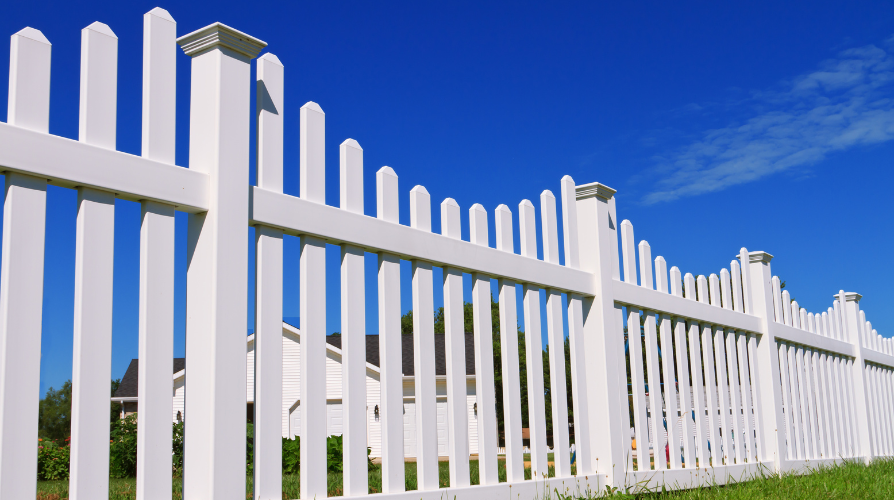
If you’re considering installing a fence, you’ve likely found yourself asking, “Which is better—vinyl or wood?” Both have their advantages, and depending on your needs, one might be a better fit for you. Let’s break it down in simple terms so you can make the best choice for your home.
Appearance: Traditional Charm vs. Sleek Look
- Wood: Wood fences have that classic, warm, and natural look that many homeowners love. You can paint or stain them in any color to match your home’s aesthetic, and they offer a rustic charm that’s hard to beat.
- Vinyl: Vinyl fences, on the other hand, give off a more modern, clean, and sleek vibe. They come in a variety of colors and styles, but you won’t get the same natural wood grain look. If you’re after a more contemporary feel, vinyl might be the way to go.
Durability: Which One Lasts Longer?
- Wood: Wood fences are sturdy but need a bit more TLC. Over time, they’re prone to rot, warping, or insect damage, especially in areas with harsh weather conditions. With regular maintenance, though, they can last a good 10-15 years.
- Vinyl: Vinyl fences are tough and built to last. They resist rot, insects, and weather damage, making them much more durable in the long run. Many vinyl fences can last 20-30 years with minimal upkeep.
Maintenance: How Much Work Are You Willing to Do?
- Wood: Wood requires regular maintenance. You’ll need to repaint or restain it every few years to keep it looking good and protected from the elements. Plus, you may need to replace boards or posts that get damaged over time.
- Vinyl: One of the biggest perks of vinyl fencing is how low-maintenance it is. You won’t need to paint, stain, or worry about rot. A quick wash with soap and water every once in a while will keep it looking fresh.
Cost: Which Fits Your Budget?
- Wood: Wood fencing is generally cheaper upfront than vinyl, which is a big reason many people go for it. However, keep in mind the ongoing costs of maintenance—paint, stain, and repairs can add up over time.
- Vinyl: Vinyl has a higher initial cost but could save you money in the long run since you won’t be spending as much on upkeep. The higher durability and low maintenance often make vinyl a better investment for those looking to fence for the long haul.
Environmental Impact: Natural vs. Synthetic
- Wood: Wood is a natural, renewable resource, which gives it an eco-friendly edge. But cutting down trees for wood fencing contributes to deforestation. Make sure to choose sustainably sourced wood if this is a concern.
- Vinyl: Vinyl is made from plastic, which isn’t biodegradable. However, many manufacturers are moving toward more eco-friendly production processes, and vinyl can sometimes be recycled at the end of its life.
Privacy and Security: What Do You Need?
- Wood: Both wood and vinyl can offer solid privacy and security, depending on the style you choose. Wood fences tend to have more customizable designs, allowing you to create a look that fits your exact needs.
- Vinyl: Vinyl fences also offer great privacy and security, and they come in plenty of solid-panel styles to block out unwanted views or keep pets and kids safe. It’s sturdy and won’t have gaps or spaces over time like some wood fences might.
Which Should You Choose?
- Go with wood if you love the traditional, natural look and don’t mind putting in some maintenance work to keep it looking great.
- Choose vinyl if you’re after long-term durability, minimal upkeep, and a modern aesthetic, and don’t mind spending more upfront.
In the end, the decision between wood and vinyl comes down to your personal preferences, budget, and how much time you’re willing to spend on maintenance. Both have their pros and cons, but either one can create a beautiful, functional fence for your home.
Work with a professional installer who uses products from Modern Fence Technologies. Or, if this is a do-it-yourself type of project, ask your retailer for our products.
For more inspiration and high-quality fencing options, check out our wide range of products and take your fencing project to the next level.

